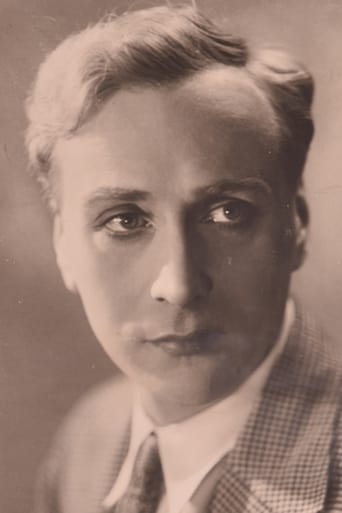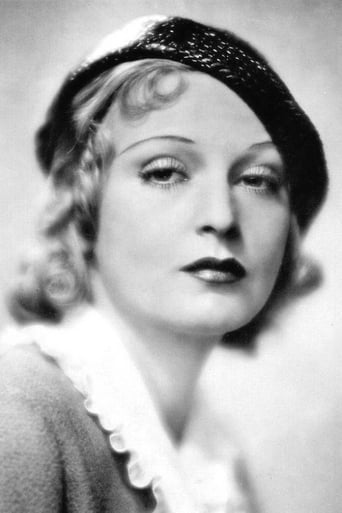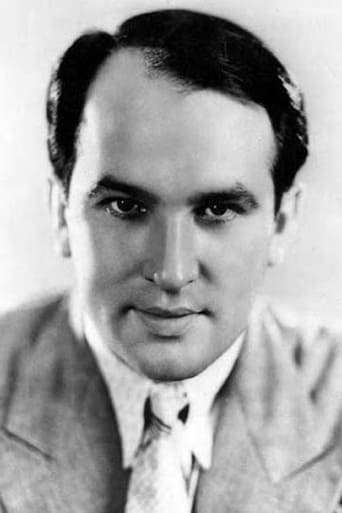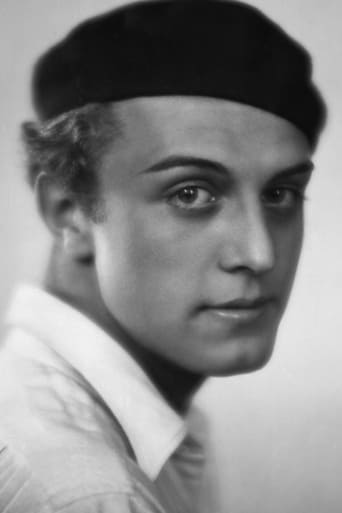MamaGravity
good back-story, and good acting
Sexyloutak
Absolutely the worst movie.
Huievest
Instead, you get a movie that's enjoyable enough, but leaves you feeling like it could have been much, much more.
Ava-Grace Willis
Story: It's very simple but honestly that is fine.
Horst in Translation (filmreviews@web.de)
"Faust" is a German silent movie from almost 90 years ago. Of course it is also still in black and white and the runtime differs depending on what version you have. The original ran for 85 minutes roughly, but the new restored version almost reaches the two-hour mark. In that case, it's not a good thing. The film drags a lot on several occasions and even if Goethe's story of Faus is a truly interesting one that I also enjoyed reading when we did it at school, it's just not enough material for a 120-minute film, at least not in this version. The director was Friedrich Wilhelm Plumpe, more known as Murnau, who worked on several of the most successful German silent films in the early days of movie-making and was probably second only to Fritz Lang at that point here in Germany. Murnau was a combat pilot in World War I by the way and no less than 6' 11" tall.Anyway, back to this film: The lead actor is a Swede that I have to say I am not familiar with. Jzst like Murnau, he died way too early. Emil Jannings plays the devilish character of Mephisto and he won the very first Academy Award not much later. The lead actress is the pretty (and) young Camilla Horn who enjoyed a prolific movie career in many decades after this one, especially the 1920s, 1930s and 1940s. And even if the trio did a decent job with their performances and certainly elevated the material, it is not enough to make up for the flaws of this film. All in all, not recommended.
TheLittleSongbird
For me, along with Metropolis, The Gold Rush and The Passion of Joan of Arc, this is one of the finest movies of the 1920s. In design and direction especially, Faust is a masterpiece. It has a great story with a strong operatic feel, and the characters are great, Mephistopheles is especially memorable.F.W.Murnau's direction is superb. This is especially true in the duel between Faust and Mephistopheles which defines the term epic in every sense, and part of the reasons why it works so well is the wonderfully malevolent atmosphere that Murnau, Robert Herlth and Walter Rohrig create. The music fits amazingly well and the story despite one or two scenes in the middle that drag just a tad is compelling.The acting is very good. Gosta Ekman does a fine job conveying his character complete with a believable transformation from decrepitude to youth, while Camilla Horn is suitably pure. As the imposing demon Mephistopheles, Emil Jannings with a magnetic appearance and presence steals the film, while he does keep some of his comedic qualities there are times where he is quite terrifying.Other than Jannings' performance and Murnau's direction, what makes Faust such a masterpiece are the expressionistic images which inspired by Casper David Frederich's paintings are amazing, with excellent cinematography and sculptures of smoke, light and steam to compliment them. All in all, a brilliant film and one of the best of its decade. 10/10 Bethany Cox
John W Chance
You will never see cinematography like this in a sound or color film! Murnau's 'Nosferatu' (1925) pales in comparison to this visually fantastic masterpiece!The first half is a perfect supernatural tale of God and the Devil (Mephisto) wagering over the soul of man: if Mephisto can win Faust, all of Earth belongs to Satan. It is shown and told with such amazing photography, sets and acting. Check out the other reviews that describe the wonderment of all its stunning shots in detail. The final scenes are masterful as well: the death of Gretchen's baby and Faust's final salvation.Emil Jannings is so great as Mephisto it looks like the Devil is a sure winner. He steals every scene he's in, whether he's pure evil, puckish, Satanic or clownish. "The Snake Has All The Lines!" No wonder he was the first actor to receive a Best Actor Oscar! It made me want to see his other classic, 'The Last Laugh' (1924).The musical soundtrack perfectly matches the action and mood of every scene. Great!But---the middle really drags on too long as a love story between the now young and handsome Faust and the beautiful Gretchen, and there are some needless scenes of Mephisto being pestered by Marguerite's aunt seeking to be his wife.The movie picks up again in the last third as Gretchen is condemned for her affair with Faust, who sacrifices himself for her, and Mephisto loses the bet.The film is so staggeringly made we can forgive the boring middle parts, but I can only give it a 9, not a 10.
ackstasis
To fans of early horror, director F.W. Murnau is best known for 'Nosferatu, eine Symphonie des Grauens,' his chilling 1922 vampire film, inspired by Bram Stoker's famous novel. However, his equally impressive 'Faust' is often overlooked, despite some remarkable visuals, solid acting, a truly sinister villain, and an epic tale of love, loss and evil. The story concerns Faust (Gösta Ekman), an old and disheartened alchemist who forms a pact with Satan's evil demon, Mephisto (Emil Jannings). As God and the Devil wage a war over Earth, the two opposing powers reach a tentative agreement: the entire fate of Mankind will rest on the soul of Faust, who must redeem himself from his selfish deeds before the story is complete.Relying very heavily on visuals, 'Faust' contains some truly stunning on screen imagery, most memorably the inspired shot of Mephisto towering ominously over a town, preparing to sow the seeds of the Black Death. A combination of clever optical trickery and vibrant costumes and sets makes the film an absolute delight to watch, with Murnau employing every known element – fire, wind, smoke, lightning – to help produce the film's dark tone. Double exposure, in which a piece of film is exposed twice to two different images, is used extremely effectively, being an integral component in many of the visual effects shots. In fact, aside perhaps from Victor Sjöström's 'Körkarlen (1921),' I can't remember double exposure being used to such remarkable effect.It's often difficult to judge performances in a silent film, but I've certainly got a generally positive attitude towards the acting in 'Faust.' I was particularly astonished by Gösta Ekman, whose character, given limitless evil control, is transformed from a withering old man to a handsome youth. Despite my impression that two different actors had been used, it seems that Ekman convincingly portrayed both the old and young man, which is a credit to both the actor and Murnau's make-up department (namely, Waldemar Jabs). Emil Jannings plays Mephisto with a sort of mysterious slyness, always one step ahead and always up to no good. Whilst I wasn't completely blown away by young actress Camilla Horn as Gretchen – the woman with whom Faust falls in love – her acting is adequate enough, and she certainly shows some very raw emotion in the scene's final act, when her forbidden romance with Faust sends her life in a downward spiral.'Faust' was F.W. Murnau's final film in Germany, his next project being the acclaimed American romance, 'Sunrise: A Song of Two Humans (1927).' At the time, the film was the most expensive ever made by the German studio, UFA (Universum Film AG), though it would be surpassed the following year by Fritz Lang's classic science-fiction epic, 'Metropolis.' Notably, there were five substantially different versions of 'Faust' produced, several of these by the director himself: these include a German original version, a French version, a late German version, a bilingual version for European audiences, and an American cut compiled by Murnau especially for MGM in July 1926. Each of these altered particular scenes and camera angles, and often included material that would be more relevant to the target cultural audience (for example, the US version reportedly contains a joke about the American Prohibition era).At the heart of 'Faust' is a love story between the corrupted title character and his doomed love, Gretchen. I felt that the scenes when Faust is trying to coax Gretchen into loving him were the slowest parts of the film, much less exciting and invigorating than the darker and more effects-driven sequences that preceded and followed it. Nevertheless, F.W. Murnau's 'Faust' is an absolute gem of 1920s silent horror, and anybody who doesn't look out for it is very surely missing out on something special.








